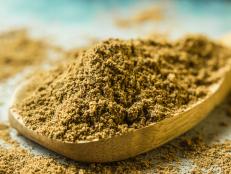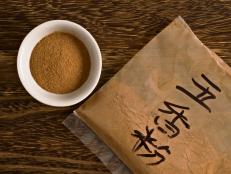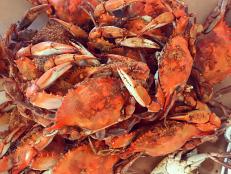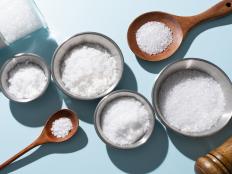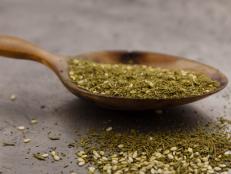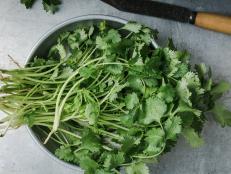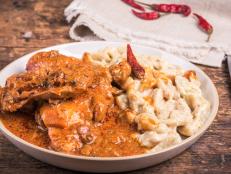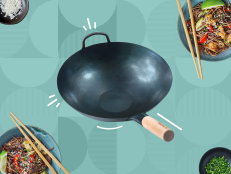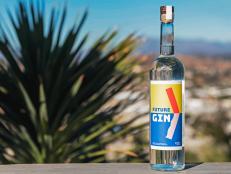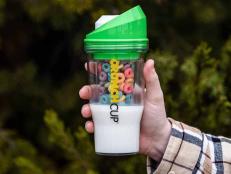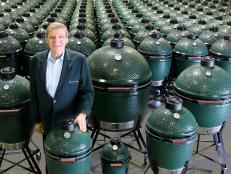What Is Curry?
We consult two experts and delve into its complicated history.

Oscar Wong/Getty Images
By Layla Khoury-Hanold for Food Network Kitchen
Layla Khoury-Hanold is a contributor at Food Network.
Curry is a ubiquitous term applied to a variety of sauce-based Indian and Southeast Asian dishes, but it’s a bit of a misnomer. The history of curry, and how the term is used today, is complicated. Add curry powder, curry paste and curry leaves to the mix, and it can be even more confusing to understand what curry is. That’s why we consulted Preeti Waas, chef-owner of Cheeni Indian Emporium, an Indian restaurant and café in Raleigh, North Carolina, and Surbhi Sahni, chef-owner of TAGMO, an Indian restaurant, bar and mithai shop in New York City.
What Is Curry?
Curry is a misnomer; the term was often used as a catch-all phrase by colonizers in India to categorize foreign-to-them dishes. Colonizers transported their versions of curry around the world and then it was transformed to suit local tastes. Therefore, curry is truly global; you’ll find it in places like the Caribbean, Thailand, South Africa, Japan and Great Britain—and in each of these places it looks and tastes very different.
“It’s a generalization,” Sahni says. Sahni purposely eschewed using the umbrella term of curry on her restaurant menu, choosing to lean more into a small plates concept. She says that more upscale restaurants in New York, like Indian Accent, are also moving away from using the term ‘curry’ on their menus. But the term is still pervasive on menus in Indian restaurants across the U.S.
There are, however, two things that are called curry in India. “One is kadhi, which is more of a yogurt-based dish from the north of India,” Sahni says. “And then, of course, there are curry leaves. The leaf is really fragrant, sort of citrusy and more green in its flavor profile.”
For some, curry can be used as a term referring to a sauce. “Curry to me as an Indian, is a sauce that begins with the trifecta of onions, ginger and garlic,” Waas says. “Add spices (both whole and powdered), tomatoes, protein or vegetable of choice and some liquid, and you have a curry to be enjoyed over a bowl of hot rice, or with roti to dip. In this vein, saucy, aromatic dishes like these are eaten around the world, including Japan, Thailand, Cambodia, Laos, Sri Lanka and Jamaica.
Types of Curry
Some dishes that are listed under the umbrella term of curry in the U.S. are ones that, in India, have specific names and ingredients that vary region to region.
“If I’m making a tamarind-based dish it would be something totally different versus if it’s coconut based versus if it’s North Indian, it is more tomato-based. There are these differences throughout the country that decide what it is [called],” Sahni says. “For example, Rogan Josh is generally put under ‘curry’ to make people understand. But it’s Rogan Josh, it’s not a curry. If the same goat dish is made in Bengal, the spices are totally different, and it’s called Gosha Mongsho. If you ate [them] you wouldn’t know that they came from the same country.”
Waas explains that curries—as a sauce, as she defines it—also vary depending on the type of grain they’re served with as well as regional ingredient preferences and availability. “More liquid if they are to coat grains of rice, or thicker if roti or naan is to function as a spoon to scoop it up,” she says. “Fish curry in Goa will typically contain tamarind. Moilee in Kerala is coconut milk-heavy with a silky texture. Bengali shrimp curry pops with mustard seeds and curry leaves. Korma is a curry that is thickened with ground poppy seeds, fennel seeds and cashews.”

Michelle Arnold / EyeEm/Getty Images
What Is Curry Powder?
Curry powder is a blend of ground spices that includes turmeric, which gives it its signature yellow hue, and other spices such as ginger, garlic, coriander, cumin, cinnamon, cloves, mustard seed, fennel seed and black pepper.
“Curry powder is a British invention of convenience, as they discovered that combining basic spices like turmeric, red chili powder, coriander powder and cumin powder approximated the taste of Indian food, to which they had grown accustomed,” Waas say. She notes that many store-bought curry powder blends sit on shelves for extended periods of time, so they don’t offer as much flavor as homemade spice blends.
Sahni agrees that curry powder isn’t a typical ingredient in Indian cuisine, although there is one dish on Tagmo’s menu that incorporates a touch of curry powder. “I have an Anglo-Indian shrimp curry. The idea was to talk about this community that has been now in India for generations and has added to the [country’s] differences in terms of flavors. For that we use a little bit of curry powder, but that’s not the only flavor profile in that dish.” The dish’s tomato-based sauce also incorporates poppy seeds, coconut, Kashmiri ground red chilies, roasted garlic and turmeric.
What Spices Are In Curry?
The idea of combining spices was not novel to the creation of curry powder. Different spice blends figure prominently in a variety of Indian dishes. “In South India, [a spice blend] is known as a podi—a specific combination of roasted and ground lentils, curry leaves, chili powder, turmeric, etcetera. In north, east and west India, we refer to these blends as masalas. For instance, the widely known garam masala or pav bhaji masala,” Waas says.
Waas explains that masalas can be dry, as a spice blend, or wet, which refers to a mixture of sauteed onions, ginger, garlic and tomatoes, alongside regional and dish-specific additions. “To break it down, you could make a wet masala, add a dry masala blend to it, add veg or a protein, then liquid, and voila, you’ve just made a curry,” she says. For example, in this rendition of Butter Chicken, garam masala’s warming spices team up with aromatics to make a fragrant tomato-based sauce.
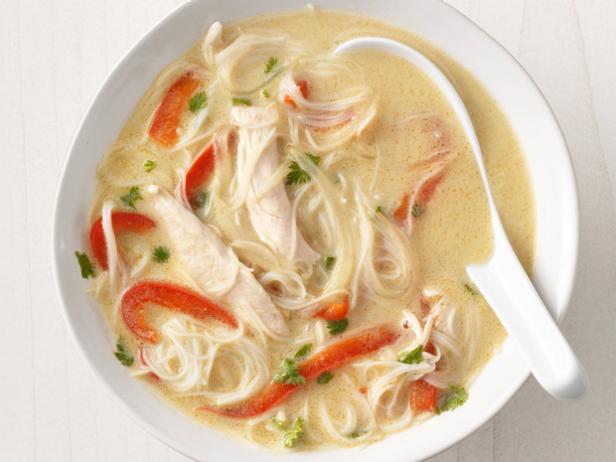
ANTONIS ACHILLEOS
What’s the Difference Between Curry Powder and Curry Paste?
The main difference between curry powder and curry paste is that curry powder consists of a dry blend of spices, whereas curry paste is wet, made with a combination of spices, aromatics, chilis and oil. Curry powder needs to be activated with liquid or oil, whereas curry paste needs to be dissolved into a liquid during cooking. Waas notes that if you add liquid to a dry masala, it will create a curry paste; but pastes are rarely called for in Indian cuisine. Pastes are more commonly used in Thai and Southeast Asian cuisine. For example, green curry paste is used to infuse a coconut milk broth in this creamy, spicy Thai Chicken Soup (pictured above) that’s reminiscent of tom ka gai.

rostovtsevayulia/Getty Images
What Are Curry Leaves?
Curry leaves are medium-sized, glossy green leaves with a leathery texture and distinct bright, citrusy aroma. Curry leaves have a bitter tinge and require a bit of preparation to maximize their aromatic properties, so they aren’t consumed raw or used as a garnish.
Waas says that curry leaves are primarily used in south and east Indian cooking. “When curry leaves hit hot fat in a pan and sizzle, they release the headiest aroma. Combine with the pop of black mustard seeds, and this combination is the tadka that makes a curry or dish sing an aria,” Waas says. “When making a podi like sambar powder, curry leaves are dry roasted with lentils, dried red chilis and seeds, cooled, and ground fine to thicken and season boiled lentils. For optimum taste and aroma, we don’t make more than the amount we could use within a week, at most.”
At Tagmo, Sahni uses curry leaves to brighten dishes such as khandvi, a Gujarati cold noodle dish rolled with coconut and cilantro, and in the coconut chutney that accompanies meen varuval, a fragrant dish of pan-fried flounder. “Coconut can be really rich in its flavor. Curry leaf adds green to the flavor, kind of like adding lemon verbena,” she says. Sahni has also experimented with using curry leaves in non-traditional applications, like a curry leaf panna cotta with a ginger and coconut milk base.
Related Links:






















